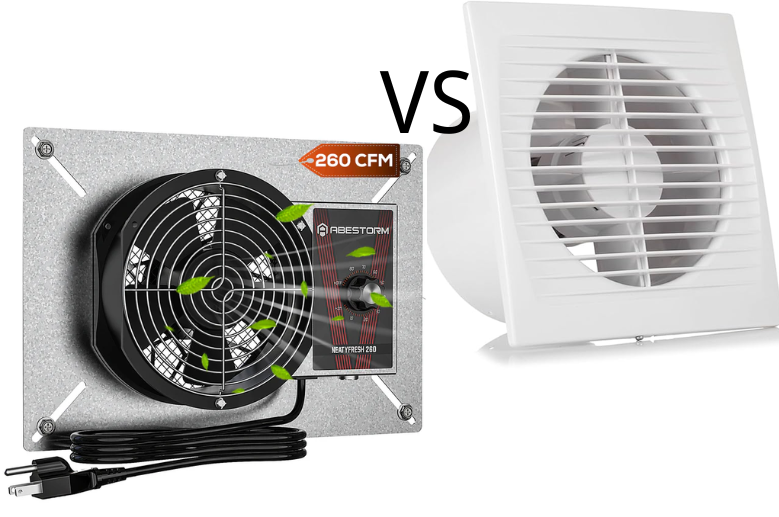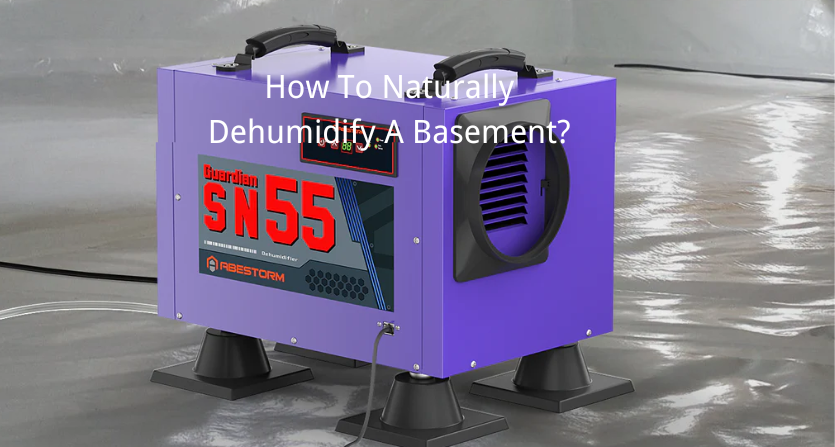Ventilation and exhaust fans both contribute to good indoor air quality but in different ways. Ventilation fans, like ceiling and oscillating floor fans, bring fresh outside air into rooms to mix with stale interior air.
Their goal is to circulate external air within indoor spaces. Exhaust fans, including bathroom and range hood models, have the opposing function of removing interior air from the outside. Exhaust fans are commonly used in spaces like bathrooms that generate moisture or odors. Both are important for air exchange and maintaining a healthy breathing environment at home. Their objectives complement one another in promoting indoor air circulation and ventilation.
They work to draw contaminated or odorous air from the point of origin and expel it directly outside through ducting. While ventilation fans refresh with fresh inflow, exhaust fans extract unwanted substances and odors from the indoor atmosphere. Understanding the distinctive functions of these two fan categories is key to implementing effective ventilation and pollution control strategies in the home or workplace.
What is a Ventilation Fan?
Ventilation fans, such as ceiling, pedestal and oscillating wall fans, improve indoor air quality by circulating outside air within rooms and buildings. They introduce fresh air from outdoors to mix with indoor air, aiding air exchange in living spaces, bedrooms and offices. Air filtration systems can further enhance indoor air quality by filtering out particles and pollutants as air circulates through rooms with the help of ventilation fans.
They work by pulling air from open windows or doors and mixing it with the indoor atmosphere. This prevents stagnation and allows for a constant flow of fresh outdoor air into the interior area. Ventilation fans promote ventilation without generating airflow in one direction only. They desire to evenly distribute fresh air throughout the indoor area to improve breathable air quality.
What is an Exhaust Fan?
Exhaust fans remove indoor air through ducting, expelling it outside rather than circulating within rooms. Used above stoves, in bathrooms and in dryers, they draw out odors, heat, steam and other pollutants at their source before circulation. In contrast to ventilation fans, exhaust fans extract contaminated air directly to the outdoors via ducting. Proper duct installation is critical for efficient air transfer from problem areas into the external atmosphere, preventing the spread of pollutants and maintaining indoor environmental quality.

How Does an Exhaust Fan Work?
Exhaust fans expel indoor air by using a high-speed impeller or centrifugal blower. This creates a vacuum, drawing air in through vents and expelling it outdoors via ducting. The fan's motor powers the blade, overcoming duct resistance to ensure efficient air removal.
The fan blades are driven by an electric motor that provides the mechanical power needed to overcome resistance in the ducting. By drawing air in and expelling it outdoors, exhaust fans can remove unwanted contaminants like heat, steam, odors and other pollutants from the source area. Proper ventilation is achieved as stale indoor air is continuously replaced.
How Does a Ventilation Fan Work?
A ventilation fan works to circulate fresh air throughout indoor spaces. When turned on, its motor powers a set of rotating blades or vents that create airflow. Ceiling fans have large slowly rotating blades that push air downwards in a wide column. Standing or tabletop fans have adjustable blade angles to direct breezes in different directions.
Wall units often oscillate back and forth to sweep broader areas. Ventilation fans draw air in passively through open windows, doors or other openings. They then evenly distribute this fresh outdoor air within the interior as the blades spin. This improves air exchange to purge stale air via mixing. Ventilation fans enhance breathable air quality without directly expelling internal air outside.
Advantages of Exhaust Fans
- Remove odors, fumes and pollutants effectively from their source. This keeps indoor air fresh.
- Eliminate hot and humid air, such as from bathrooms, kitchens, laundries etc. This enhances comfort.
- Prevents the buildup of moisture, gases and other airborne contaminants that can cause health issues or damage.
- Circulate air out quickly in emergencies like smoke or fire to facilitate evacuation.
- Provide directed airflow that is focused on the area needing ventilation rather than just mixing air.
- Ducting allows the targeted expelling of problem air outside rather than recirculating within the home.
- Appropriately installed exhaust fans can significantly improve indoor air quality and the healthiness of living/working spaces.
- Energy-efficient models minimize operational costs compared to other ventilation methods like open windows.
- Little to no maintenance required - provide continuous cleanup of indoor air with automatic operation.
- Range hood exhaust safely removes smoke, grease and odors from cooking directly outside.
Applications of Exhaust Fans
Exhaust fans have many applications in both residential and commercial settings where effective ventilation is required. In homes, they are commonly used in kitchens installed above the stove as range hoods to remove cooking odors and gases. Bathroom exhaust fans help clear hot air and moisture after showering. Utility rooms utilize exhaust fans for venting dryer appliances.
Meanwhile, in commercial buildings, exhaust fans are widely applied in restaurant kitchens, large commercial bathrooms, printing shops, garages and more. Laboratory fume hoods also make use of powerful exhaust units. The type of exhaust fan selected depends on the particular pollution source and cubic footage of air requiring ventilation. Properly sized units ensure efficient airflow evacuation.

Advantages of Ventilation Fans
- Circulate fresh air throughout indoor areas to improve overall air quality and breathability.
- Help mix interior air and prevent stagnation that can concentrate pollutants.
- Push or draw fresh air from windows/doors to purge stale indoor atmospheres naturally.
- Create air currents that feel cooler than still air and Increase perceived comfort.
- Require no ducting like exhaust fans, keeping installations simple and low-cost.
- Operate quietly usually making little noise while effectively circulating air.
- Floor, table and pedestal fans are highly adjustable and portable as needed.
- Ceiling fans mounted overhead maximize coverage of the entire room's air circulation.
- Oscillating and remote-controlled models offer versatility in airflow direction.
- Many models feature versatile speeds adjustable for various ventilation needs.
- Passively introducing new air naturally through openings rather than exhausting air out.
- Sustained air mixing keeps allergens and indoor pollutants diluted for better IAQ.
Applications of Ventilation Fans
Ventilation fans have widespread applications in both residential and commercial spaces to promote air circulation and quality. Ceiling fans are commonly installed in central living areas, such as living rooms and bedrooms, to refresh indoor air continuously. Pedestal and table fans positioned strategically can effectively ventilate other spaces on an as-needed temporary basis.
Commercial installations utilize large industrial ceiling fans or wall fans to periodically change large volumes of air in gymnasiums, warehouse facilities, and public buildings. Workplaces employ oscillating desktop fans at employee workstations. Retail stores install ceiling or suspended fans to evenly distribute air conditioning for thermal comfort. Ventilation fans are also crucial in areas with poor natural airflow such as basements, attics, and large open floor-plan rooms.
How to Determine the Type of Fan You Need?
Purpose - Is it for ventilation/air circulation or exhaust for pollutant removal?
Location - Which area of the home/building requires improved air changes?
Size of space - Consider cubic footage to select an appropriately sized fan.
Pollution/odor source - What contaminants need removal i.e cooking, moisture etc?
Ducting availability - Can an exhaust fan vent outside or is ventilation sufficient?
Budget - Ventilation fans tend to be less costly than exhaust fan/duct installation.
Noise level - How disruptive will the operation sound be in that location?
Energy efficiency - Compare operating costs of alternatives for long-term savings.
Controls/features - Look for timer, speed, oscillation or remote options as desired.
Aesthetics - Consider design choices like integrated or exposed mounting styles.
Environment - Account for climate/seasonal factors i.e. heating/cooling needs.
Professional advice - Consult HVAC experts for systems in large facilities.
Conclusion
Ventilation fans and exhaust fans both enhance indoor air quality, but they differ primarily in their direction of airflow. Ventilation fans circulate existing indoor air by mixing it with fresh air from outside. Exhaust fans directly extract contaminated interior air outdoors through ducting to remove pollutants and odors at their source. Understanding these distinct functions enables homeowners and builders to select the most suitable fan type to manage air quality in specific room applications.









Shop For Dehumidifier